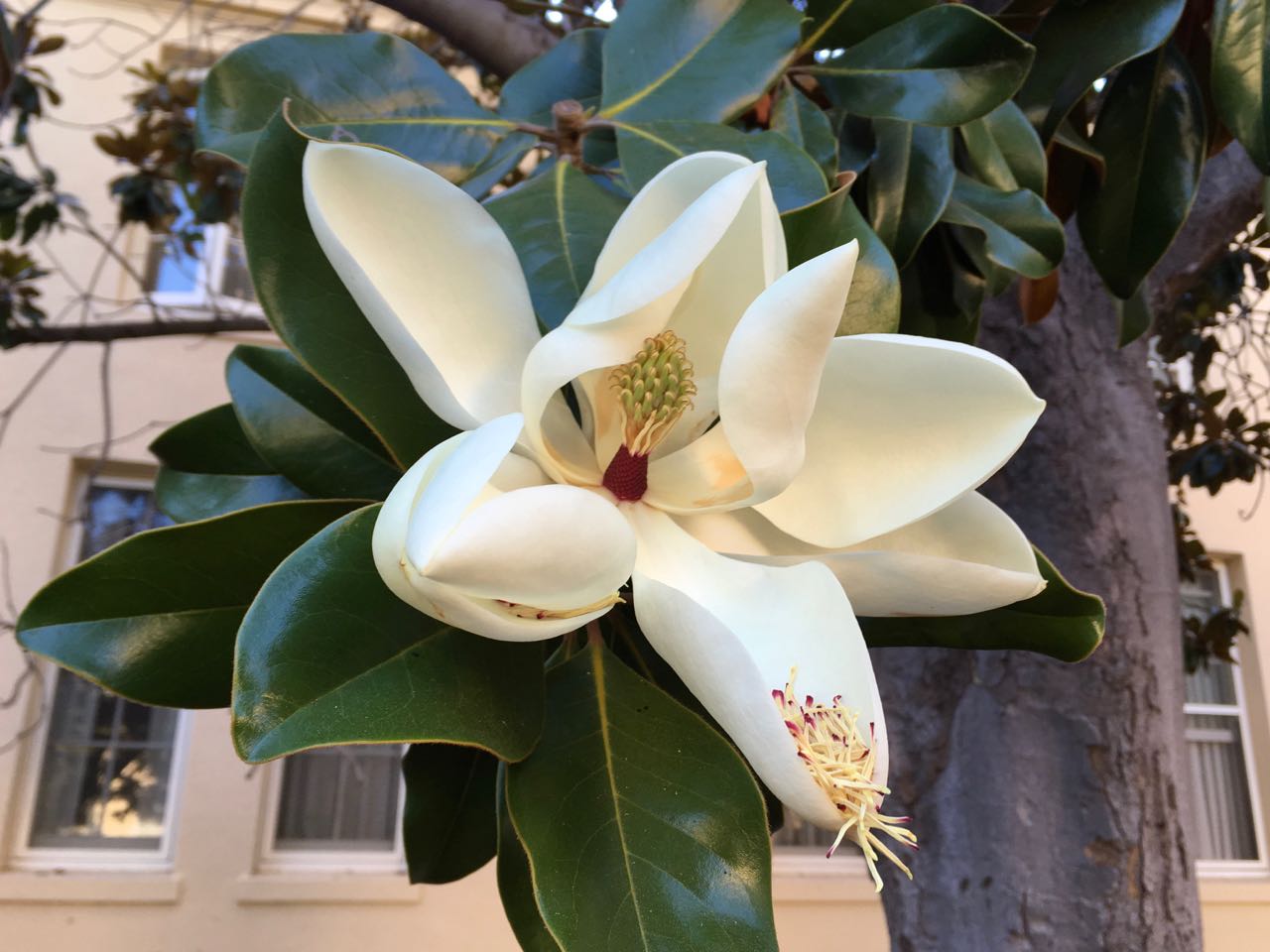Magnolia grandiflora
 southern magnolia
southern magnolia
The huge, white, fragrant flowers always seem slightly surprising on this substantial evergreen tree. The leaves are large, shiny green above and about 8 inches long. When the leaves are young they have an intense matte russet finish below. When the leaves grow larger, the under surfaces approach light green, only downy traces of the original felt remaining. As flowering trees go, the magnolia is of primitive design, still retaining characteristics of the cone arrangement for protection of the seeds, which form within an interesting large 4-inch fruit that opens in due course to reveal the large bright red seeds. This ripening can be watched if the fruit is placed in a cup of water on your desk. The brilliant red seeds, when they emerge from the protection of the cone, remain attached by fine cords and dangle provocatively to the delectation of birds. If sawn through, the fruit can be used as a printing block by children. Mississippi is the Magnolia State, but both Mississippi and Louisiana claim it as their state flower. In the South the tree is often referred to as the bull bay.
See southern magnolias in front of the Post Office. Encina Hall has four mature ones along its facade; four youngsters in front were added in 2009 when the landscaping was redone. Four of the best on campus are on Escondido Road at the entrance to Branner Hall. Three remain of the 10 at the east end of Salvatierra Street; several of these were replaced by seven imposing fern podocarpus around 2010.
One said to have been a gift by Lou Henry Hoover was at 570 Alvarado Row, the original location of the Griffin-Drell house (the house was relocated when the Munger Graduate Residence was built there in 2006). A screen of variety ‘St. Mary’ ran the length of Sequoia Lane, now the Science and Engineering Quad.
Illustrations: leaf | Detail of venation.
Name derivation: Magnolia – Pierre Magnol, 1638–1715, botanist of Montpellier.
About this Entry: The main text of this entry is from the book Trees of Stanford and Environs, by Ronald Bracewell, published 2005. Young Encina planting noted, Muwekma-tah-ruk (543 Lasuen Mall) location removed, minor edits; all locations now accurate (Jun 2020, SP).





